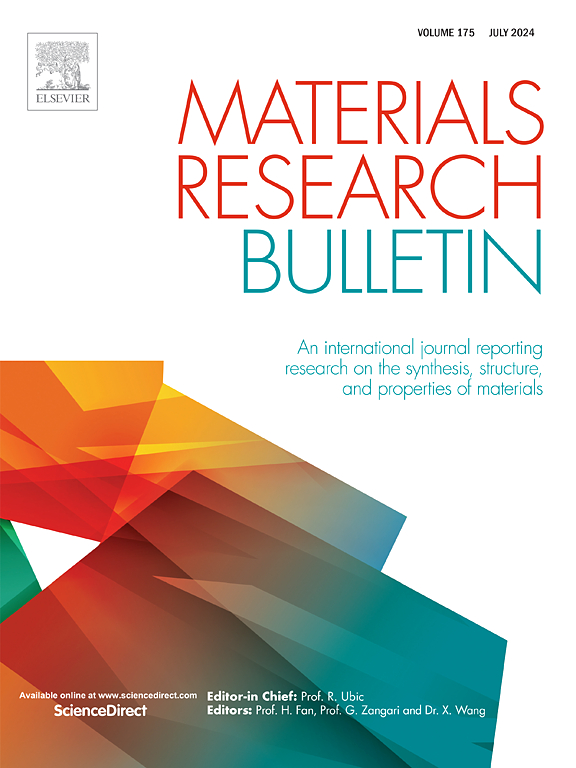通过悬浮等离子喷涂一步法轻松制备 Li4Ti5O12 涂层
IF 5.7
3区 材料科学
Q2 MATERIALS SCIENCE, MULTIDISCIPLINARY
引用次数: 0
摘要
尖晶石 Li4Ti5O12(LTO)由于其几乎为零的体积变化和良好的锂离子迁移率,是一种很有前途的固态薄膜电池(SSTB)阳极材料。然而,制备用于 SSTB 的 LTO 阳极需要繁琐的真空处理步骤,成本效益不高。在这种情况下,本研究开始评估多功能悬浮等离子喷涂(SPS)方法,以在不使用任何粘合剂的情况下制造 LTO 涂层。通过 SPS 方法制备的 LTO 涂层的微观结构和化学计量显示,起始原料中保留了 76 wt.% 的尖晶石 LTO,以及少量金红石型和锐钛型 TiO2。根据所采用的加工参数,SPS 实验产生了不同厚度的 LTO 涂层。所生产的基于 LTO 的电极在半电池中通过电静力循环测试的电化学数据显示,在预期电位下可发生可逆的锂化和脱锂,从而验证了 SPS 技术在充分优化后用于制造 SSTB 组件的前景。本文章由计算机程序翻译,如有差异,请以英文原文为准。

Facile one-step fabrication of Li4Ti5O12 coatings by suspension plasma spraying
Spinel Li4Ti5O12 (LTO) is a promising anode material for solid state thin film batteries (SSTB) due to its almost-zero volume change and promising Li-ion mobility. However, preparing LTO anodes for SSTB demands tedious vacuum-based processing steps that are not cost effective. In this context, the present study embarks on evaluating the versatile suspension plasma spraying (SPS) approach to fabricate LTO coatings without using any binder. The microstructure and stoichiometry of the fabricated LTO coatings developed through the SPS route reveals retention of ∼76 wt.% of the spinel LTO from the starting feedstock, with minor amounts of rutile and anatase TiO2. The SPS experiments yielded varying thickness build up rates of the LTO coatings depending on the processing parameters adopted. The electrochemical data of the produced LTO based electrode tested in a half-cell through galvanostatic cycling show reversible lithiation and delithiation at expected potential, thereby validating the promise of the SPS technique for potential fabrication of SSTB components once fully optimized.
求助全文
通过发布文献求助,成功后即可免费获取论文全文。
去求助
来源期刊

Materials Research Bulletin
工程技术-材料科学:综合
CiteScore
9.80
自引率
5.60%
发文量
372
审稿时长
42 days
期刊介绍:
Materials Research Bulletin is an international journal reporting high-impact research on processing-structure-property relationships in functional materials and nanomaterials with interesting electronic, magnetic, optical, thermal, mechanical or catalytic properties. Papers purely on thermodynamics or theoretical calculations (e.g., density functional theory) do not fall within the scope of the journal unless they also demonstrate a clear link to physical properties. Topics covered include functional materials (e.g., dielectrics, pyroelectrics, piezoelectrics, ferroelectrics, relaxors, thermoelectrics, etc.); electrochemistry and solid-state ionics (e.g., photovoltaics, batteries, sensors, and fuel cells); nanomaterials, graphene, and nanocomposites; luminescence and photocatalysis; crystal-structure and defect-structure analysis; novel electronics; non-crystalline solids; flexible electronics; protein-material interactions; and polymeric ion-exchange membranes.
 求助内容:
求助内容: 应助结果提醒方式:
应助结果提醒方式:


